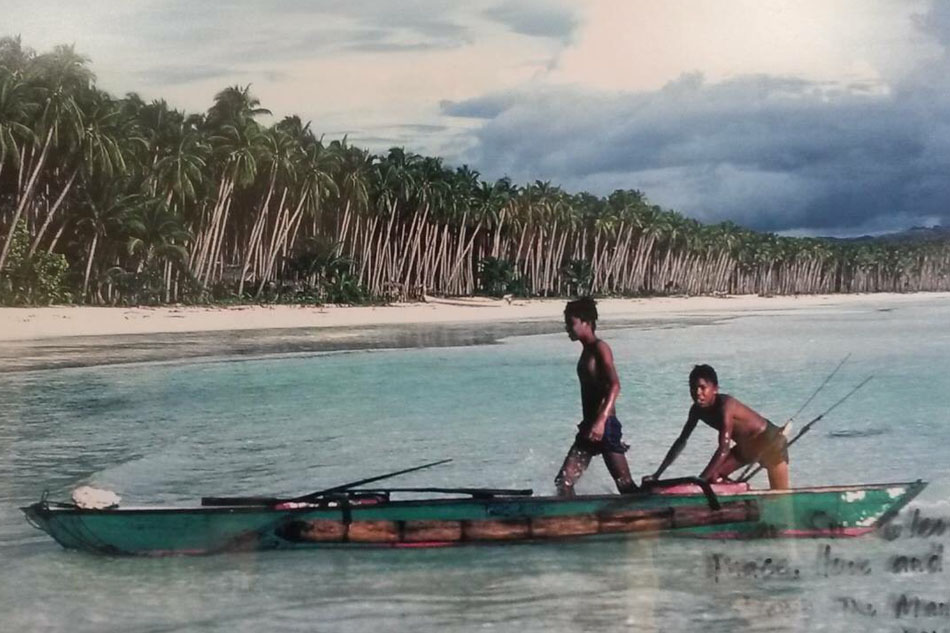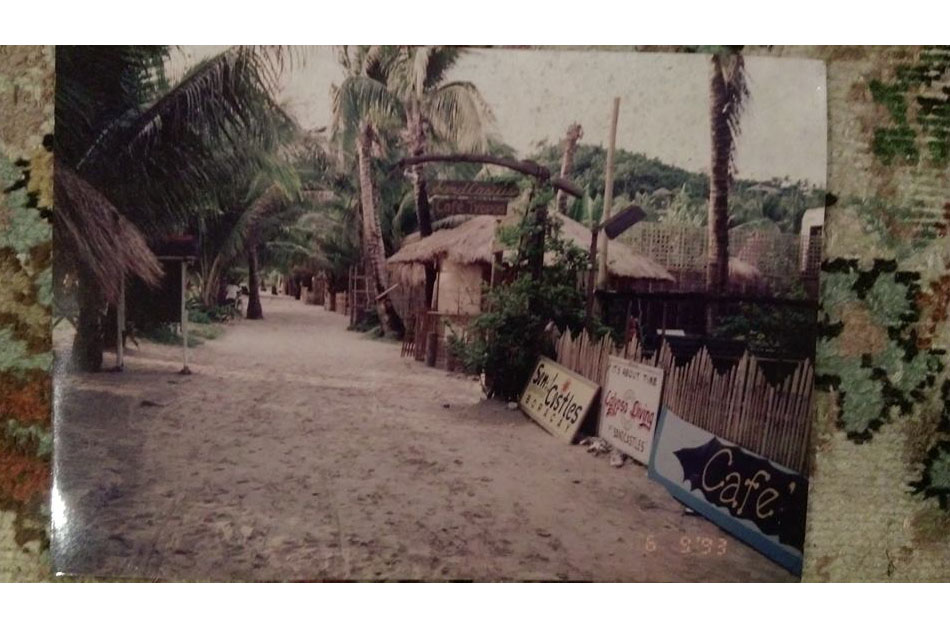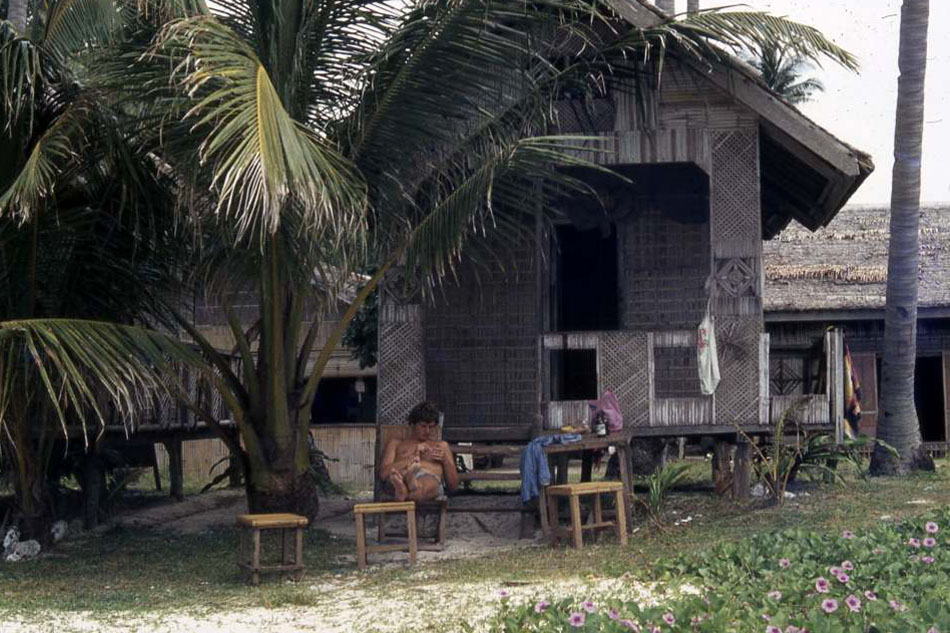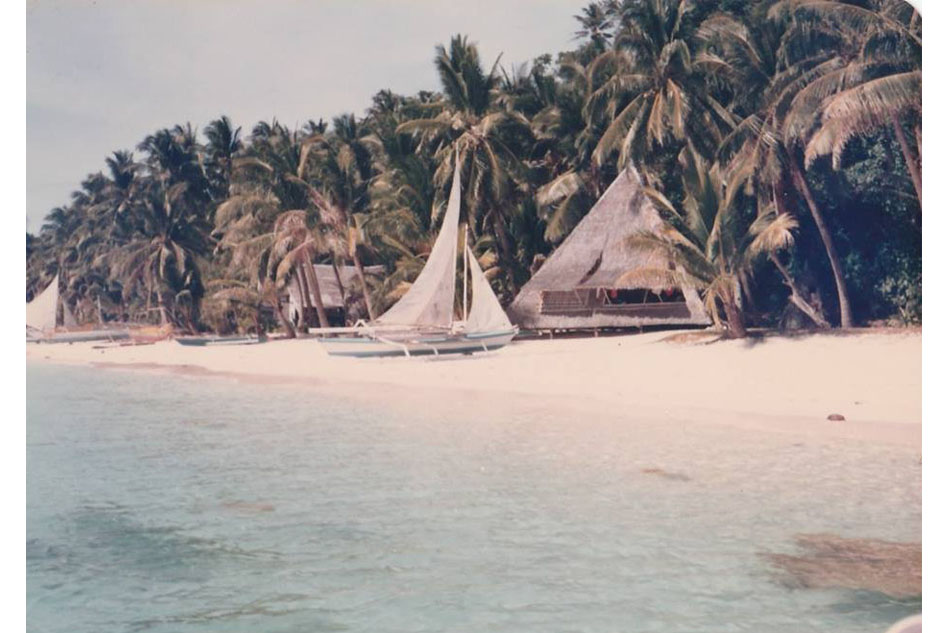The Tirols of Boracay | ABS-CBN

Welcome, Kapamilya! We use cookies to improve your browsing experience. Continuing to use this site means you agree to our use of cookies. Tell me more!
The Tirols of Boracay
The Tirols of Boracay
Ces Oreña-Drilon
Published Oct 25, 2018 11:34 PM PHT
|
Updated Oct 26, 2018 04:35 PM PHT
In the 1960s, when he frolicked on Boracay’s white sand beaches as a young boy, there was nothing on the shore but coconut trees. Leonard Tirol, 62 years old and now a grandfather of five, recalls, “People haven’t seen Boracay this way. I saw this in the 60s, this was like paradise, like what it is now.” The government-led beach clean-up, he says, has somehow turned back the hands of time, bringing back the turquoise glimmer of water and untouched powdery sand that was his childhood playground. Leonard has learned to ride the ebb and flow of the tide—when Boracay became a party place, he adjusted to the hordes of people who descended on the island. “Then all of a sudden, boom, nobody again.”
In the 1960s, when he frolicked on Boracay’s white sand beaches as a young boy, there was nothing on the shore but coconut trees. Leonard Tirol, 62 years old and now a grandfather of five, recalls, “People haven’t seen Boracay this way. I saw this in the 60s, this was like paradise, like what it is now.” The government-led beach clean-up, he says, has somehow turned back the hands of time, bringing back the turquoise glimmer of water and untouched powdery sand that was his childhood playground. Leonard has learned to ride the ebb and flow of the tide—when Boracay became a party place, he adjusted to the hordes of people who descended on the island. “Then all of a sudden, boom, nobody again.”
The Tirols, one of the most prominent families on the island, have one of the most epic origin stories. Leonard says their surname used to be Ureta, until the time one of his ancestors had an altercation with a Spanish soldier. “The Guardia Civil would ride the shoulders of the Indios to cross the river—one of them whipped my great-great-great-grandfather like a horse, and he threw off the soldier. They started to shoot at him but he managed to escape.” Tirol says his ancestor then escaped to Europe and hid in Vienna where he sought refuge in the province of Tirol. He managed to come back and carried the name to escape detection. The family then adopted the Tirol coat of arms, and to this day, Tirol family members make pilgrimages to Vienna to remember the provenance of the name they proudly carry.
The Tirols, one of the most prominent families on the island, have one of the most epic origin stories. Leonard says their surname used to be Ureta, until the time one of his ancestors had an altercation with a Spanish soldier. “The Guardia Civil would ride the shoulders of the Indios to cross the river—one of them whipped my great-great-great-grandfather like a horse, and he threw off the soldier. They started to shoot at him but he managed to escape.” Tirol says his ancestor then escaped to Europe and hid in Vienna where he sought refuge in the province of Tirol. He managed to come back and carried the name to escape detection. The family then adopted the Tirol coat of arms, and to this day, Tirol family members make pilgrimages to Vienna to remember the provenance of the name they proudly carry.
If this story is in their blood, so is Boracay. Leonard’s paternal grandfather, Ciriaco, and granduncle Lamberto once owned more than half of the 1032-hectare island—at a time when most of Boracay was held by just a handful of families. When Ciriaco passed away in 1921, he was one of the richest men in the province of Aklan. His fortune was built on trading goods between Boracay and Manila. “He would get copra from Boracay Island, then go to Manila, and when he came back, he would sell dry goods brought from Manila. Some of his properties in Boracay were bartered for goods.” Ciriaco had property in the lowlands—he owned what’s now considered premium real estate in the island.
If this story is in their blood, so is Boracay. Leonard’s paternal grandfather, Ciriaco, and granduncle Lamberto once owned more than half of the 1032-hectare island—at a time when most of Boracay was held by just a handful of families. When Ciriaco passed away in 1921, he was one of the richest men in the province of Aklan. His fortune was built on trading goods between Boracay and Manila. “He would get copra from Boracay Island, then go to Manila, and when he came back, he would sell dry goods brought from Manila. Some of his properties in Boracay were bartered for goods.” Ciriaco had property in the lowlands—he owned what’s now considered premium real estate in the island.
“My granduncle Lamberto, owned land in the northern part. He was based in Aklan, and tended to coconut plantations,” Leonard says. Lamberto’s descendants were the original owners of the land where the sprawling Shangri-La Resort currently stands.
“My granduncle Lamberto, owned land in the northern part. He was based in Aklan, and tended to coconut plantations,” Leonard says. Lamberto’s descendants were the original owners of the land where the sprawling Shangri-La Resort currently stands.
ADVERTISEMENT
Today the third-generation Tirols to which Leonard belongs, manage their own resorts. Strewn here and there across the island, most of them can be found along Station one. It’s a huge clan, with members counting in the hundreds.
Today the third-generation Tirols to which Leonard belongs, manage their own resorts. Strewn here and there across the island, most of them can be found along Station one. It’s a huge clan, with members counting in the hundreds.
Ciriaco had twelve children—two from his first marriage to Gertrudes Bautista, and ten from his second marriage to Trinidad Hontiveros. Leonard’s father, Leon, was among the six sons of Ciriaco from the second marriage. Leon also married twice—Leonard has four siblings, two of them half-sisters from his father’s first marriage. They all share in the properties inherited from their parents. He says being a big family meant the land holdings had to be divided amongst many heirs. The properties have gone up so exponentially in value that family squabbles can’t be helped, Leonard admits. But he says that on his father’s side, everybody is in touch, and quarrels over division of property are avoided. It isn’t the same for other Tirol relations though, Leonard confides. “My cousins, kanya-kanya, they have their own problems.”
Ciriaco had twelve children—two from his first marriage to Gertrudes Bautista, and ten from his second marriage to Trinidad Hontiveros. Leonard’s father, Leon, was among the six sons of Ciriaco from the second marriage. Leon also married twice—Leonard has four siblings, two of them half-sisters from his father’s first marriage. They all share in the properties inherited from their parents. He says being a big family meant the land holdings had to be divided amongst many heirs. The properties have gone up so exponentially in value that family squabbles can’t be helped, Leonard admits. But he says that on his father’s side, everybody is in touch, and quarrels over division of property are avoided. It isn’t the same for other Tirol relations though, Leonard confides. “My cousins, kanya-kanya, they have their own problems.”
From his forbears, who owned more than half of the island, Leonard and his siblings inherited property in Stations 2 and 3 of the island, which they have since sold, preferring to keep some raw land in Baranggay Manoc-Manoc near the Mandala Spa, as well as property in the quieter Station 1, where the 32-room resort, the White House, now stands. The land holdings were further reduced when Leonard donated some land to the PNP and the Bureau of Fire Protection. The White House is one of the hotels cleared to open by the DENR and DOT. Leonard has two children, Bong and Maggie. Bong, director of government affairs for Shangri-La Boracay, is married to Amanda, the most sought-after wedding planner in the island. Maggie is married to Martin Jickain. Bong has three children and Maggie, two.
From his forbears, who owned more than half of the island, Leonard and his siblings inherited property in Stations 2 and 3 of the island, which they have since sold, preferring to keep some raw land in Baranggay Manoc-Manoc near the Mandala Spa, as well as property in the quieter Station 1, where the 32-room resort, the White House, now stands. The land holdings were further reduced when Leonard donated some land to the PNP and the Bureau of Fire Protection. The White House is one of the hotels cleared to open by the DENR and DOT. Leonard has two children, Bong and Maggie. Bong, director of government affairs for Shangri-La Boracay, is married to Amanda, the most sought-after wedding planner in the island. Maggie is married to Martin Jickain. Bong has three children and Maggie, two.
They have been here a long time and have seen the island through various turns and changes. Leonard welcomes the government’s rehabilitation of Boracay, but he is also vocal about his objections to certain government initiatives—in contrast to the fearful silence of many of his fellow stakeholders.
Tirol worries about what he sees as the Department of Tourism’s extreme ban on several beach activities. He says the strict rules “will kill the goose that lays the golden egg.” Eating and drinking on the beach and outdoor weddings for instance, are not allowed. “The government shouldn’t say no, they should listen first—for instance there will be no tables and chairs on the beach, because they say, that’s the law, e mali yan, you have to listen to the stakeholders. If you want to regulate activities on the beach, ok fine. Boracay became famous because it is a wedding destination, if they have it indoors, why come to Boracay and spend millions when you can have it in Makati?”
They have been here a long time and have seen the island through various turns and changes. Leonard welcomes the government’s rehabilitation of Boracay, but he is also vocal about his objections to certain government initiatives—in contrast to the fearful silence of many of his fellow stakeholders.
Tirol worries about what he sees as the Department of Tourism’s extreme ban on several beach activities. He says the strict rules “will kill the goose that lays the golden egg.” Eating and drinking on the beach and outdoor weddings for instance, are not allowed. “The government shouldn’t say no, they should listen first—for instance there will be no tables and chairs on the beach, because they say, that’s the law, e mali yan, you have to listen to the stakeholders. If you want to regulate activities on the beach, ok fine. Boracay became famous because it is a wedding destination, if they have it indoors, why come to Boracay and spend millions when you can have it in Makati?”
People come, he says, because they want to enjoy the beach. Not just for weddings but for annual milestones like New Year’s when fireworks light up the sky for the full stretch of beach.
People come, he says, because they want to enjoy the beach. Not just for weddings but for annual milestones like New Year’s when fireworks light up the sky for the full stretch of beach.
Tirol is also very concerned about the entry of the Department of Agrarian Reform, “What are they going to do here, to have land reform here, give out the properties? You cannot till the properties here, this is a tourist island, such a small island. Why will they interfere here? Get the properties here and then give out to the indigenous people?” Leonard says the President is ill-advised on this count. Take the plan to bring in Mangyans from Mindoro and not Boracay. He also says most of the Aetas living in the island are not really natives of Boracay and hail from the mainland. He claims, “In the sixties, when I was still a little kid, there were only 6 or 7 or 8 families of Aetas. In Iloilo, I used to stay there, there are a lot of Aetas there, they aren’t there anymore, they are all here.”
Tirol is also very concerned about the entry of the Department of Agrarian Reform, “What are they going to do here, to have land reform here, give out the properties? You cannot till the properties here, this is a tourist island, such a small island. Why will they interfere here? Get the properties here and then give out to the indigenous people?” Leonard says the President is ill-advised on this count. Take the plan to bring in Mangyans from Mindoro and not Boracay. He also says most of the Aetas living in the island are not really natives of Boracay and hail from the mainland. He claims, “In the sixties, when I was still a little kid, there were only 6 or 7 or 8 families of Aetas. In Iloilo, I used to stay there, there are a lot of Aetas there, they aren’t there anymore, they are all here.”
The future seems as far away from Leonard’s reach as the Boracay sun slipping down the long horizon, but the Tirols are known for their resilience and survival instincts. It’s written in their coat of arms. Leonard hopes it is this resilience that he will be able to draw from during these challenging times plaguing the island the Tirols have always loved, and which they have always known as home.
The future seems as far away from Leonard’s reach as the Boracay sun slipping down the long horizon, but the Tirols are known for their resilience and survival instincts. It’s written in their coat of arms. Leonard hopes it is this resilience that he will be able to draw from during these challenging times plaguing the island the Tirols have always loved, and which they have always known as home.
Click on image below for slideshow
Slideshow photographs from Boracay Retrospective on Facebook
ADVERTISEMENT
ADVERTISEMENT
































